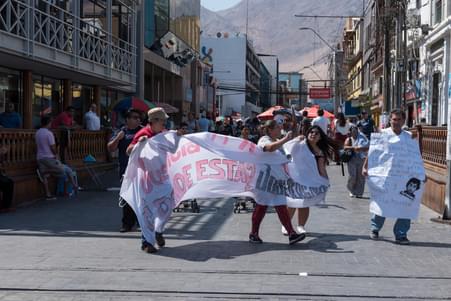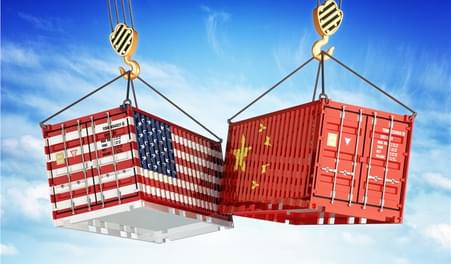In Colombia, the government and investors breathed a sigh of relief when Congress ratified a revised peace plan, albeit with the abstention of the CD party (Centro Democrático), led by former President Alvaro Uribe. Though the accord’s revisions addressed 57 of the CD’s 60 change requests, Colombia’s largest opposition party abstained out of both principle and political expediency, knowing that roughly half of Colombians agree that the congressionally ratified accord is too lenient on the FARC – support that they hope to turn into electoral victory in 2018. Political disunity over the peace agreement is important because the reintegration of disarmed FARC militants and the infrastructure proposed to penetrate former FARC strongholds are both initiatives that will require future Congressional votes and funding.
To prove the opposition wrong, President Santos needs money, particularly for an ambitious infrastructure plan to modernize communication and transportation arteries across one of the most topographically challenging nations in the world. Some funding may come from international development banks, for which his Nobel Prize certainly helps, but most funding was meant to come from oil, gas and coal royalties, all of which have dropped precipitously since late 2014.
Colombia’s external debt to GDP ratio doubled from 20.7% to 40.8% from 2012 to 2016. The country will struggle to bring that figure below 40% in light of continued depressed oil prices and the national security need to fund infrastructure spending.
What little recovery energy prices might have realized in 2017 now seems in jeopardy as Donald Trump assumes office. Backed by a de-regulation friendly Congress, the secretaries of Energy and the EPA will quickly reverse what the energy sector considers smothering regulations. Their first move may be the approval of the Keystone pipeline, which will pump Canadian tar-sand oil into Texan refineries, displacing Mexican, Venezuelan and Colombian oil. Next, the EPA will lift restrictions on LNG export terminals that have trapped some of the world’s cheapest natural gas inside the US, a policy embraced by the Obama administration to foster investment and job creation by the downstream industrial sector.
As OPEC helps stabilize oil prices above $50/barrel, we can expect an uptick in fracking that unleashes the vast supply of US shale oil. Lastly, Appalachian coal miners will once again be able to compete with Colombian coal thanks to the promise of looser regulations.
Altogether, an emerging US energy super power represents an imposing threat to every Andean country, but most especially Venezuela and Colombia. The ability of both countries to manage the threat of cheap energy prices, however, could not be more contrasting. While Venezuela is a one-horse economy, Colombia still retains diverse manufacturing and agrifood sectors. The collapse of energy prices in late 2014 devastated the value of the Colombian Peso, from which it is yet to recover. Hovering at about 3000 to the USD, the inexpensive Colombian Peso has helped resurrect a declining industrial sector. Colombian factory utilization has grown, as imports are substituted by domestic suppliers, and the most competitive now enjoy expanded export sales. If Colombia can improve its domestic infrastructure and logistics and energy prices remain relaxed, a healthy re-industrialization of Colombia may become the nation’s future growth strategy. Such a scenario will call for Peso denominated debt financing by many of the country’s mid-size manufacturers and agrifood providers.
Venezuela no longer has an industrial or agricultural sector of substance to counterweight the country’s disintegrating oil production capacity. Both were effectively dismantled by a combination of an overvalued currency that facilitated cheap food imports, government price controls and burdensome regulation that stifled investment and maintenance in industry. Even a positive change of government, which seems as elusive as ever in Venezuela, would not guarantee economic renewal in a single sector economy competing in a world of cheap oil.
Predicting the structure of political power in Venezuela remains as difficult as ever. The Maduro administration reversed course on several promises made to the opposition in 2016, effectively poisoning what little room for dialogue that remains, as the opposition’s aim for a recall was denied by the government.
Analysts predict a great than 50% likelihood of default in 2017. Many believe that such an event would trigger some kind of direction changing political event, likely involving governing by the military, arguably the one remaining Venezuelan institution with both power and some degree of integrity.
Though many Venezuelans and even some investors would welcome a new government, how the country gets there and what role might be played by the military remains both a mystery and a source of anxiety to investors. The hope embodied by the referendum vote in 2016 helped keep the peace in a trying atmosphere of essential product shortages, government induced brownouts, and runaway crime. Now that the referendum deadline has passed, that hope is gone and Venezuelan’s beleaguered middle classes have little to lose. The spectre of mass protests looms large in 2017 and with them the real possibility of an undemocratic change of power involving the military.
A few brave, and very well informed investors continue to trade in Venezuelan and PDVSA bonds but all positions are short term, looking for a quick boost in returns. The medium-term outlook for Venezuela is almost as bleak as the short term one. 17 years of Chavista governance has driven the entrepreneurial class abroad, dislocated industry and commerce and created a society of currency traders and scavengers of basic necessities. A new government would offer some short-lived hope until they realized the task ahead of them to rebuild Venezuela, funded by a dysfunctional PDVSA whose US refinery clients now prefer Albertan tar-sand crude.
Without a doubt, the Andean region’s most promising star will continue to be Peru. A remarkably close and important Presidential election in 2016 was won by Pedro Pablo Kuczynski. The spritely 78 year old brings an impressive C/V to the office of President. Investors universally applauded the victory of a smart and sophisticated pro-business President who is universally considered incorruptible. However, the bruising nature of Peruvian politics did not take long to begin tarnishing PPK’s lustre. First, he lost Carlos Moreno, former healthcare adviser to the president and a friend, whose conversation with government vendors promising graft was recorded and released in October, 2016. Then came the resignation of defence minister Mariano Gonzalez after a news program revealed his affair with an aide in December. Then, under pressure from Keiko Fujimori’s congressional opposition party that smelled blood, Peru’s respected education minister was forced to resign under an ill-defined cloud of suspected corruption that almost certainly did not implicate the Minister in question, Jaime Saavedra.
Going forward in 2017, PPK will be decidedly more cautious with policies and announcements that may affront the Popular Force party controlled by Keiko Fujimori. It is unclear to what degree Fujimori will attempt to extract power and benefit from PPK’s ambitious infrastructure building plans, but the 4th quarter of 2016 clearly showed that political synchronization between Peru’s most powerful politicians is key to fulfilling Peru’s growth potential.
Beyond politics, Peru enjoys a more favourable external environment than other Andean markets. While a Trump-led America will help repress energy prices, a resurgence in US infrastructure spending, which many anticipate, will prove beneficial to base metal prices, of which Peru is a world class producer. Furthermore, the uncertainty that a more nativist strain of politics in the US and Europe generates to the world economic order, the higher gold prices are likely to follow – an additional boon to Peru. Furthermore, Peru’s new minister of mining is taking concrete measures to simplify the bureaucracy of starting a mine, reversing a six-year trend that has hurt mining exploration efforts in recent years.
Peru’s diverse array of trading partners including the leading economies of Asia will prove a source of strength in 2017 should US trade become complicated by knee jerk legislation designed to reward US rust belt voters who want their wall built. PPK made a high profile visit to China and received a royal welcome by Peru’s largest trading partner. Chinese trade and investment levels will grow in Peru, helping to ensure a healthy current account in future years. Backed the region’s most stable long term currency, Peruvian firms will continue to borrow in dollars in ever longer terms.









